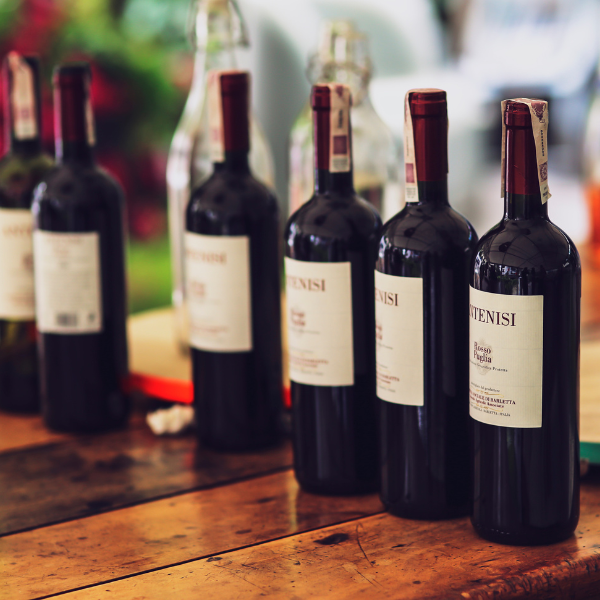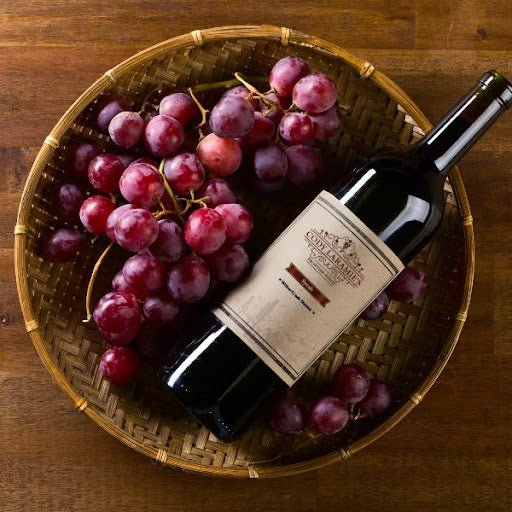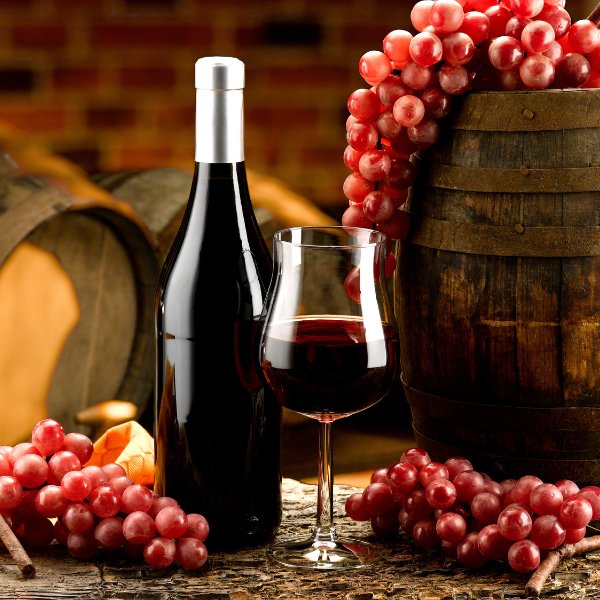In the highly competitive world of winemaking, the label on a wine bottle is as crucial as the wine it represents. A thoughtfully designed custom wine label does more than catch the eye—it tells the story of the wine and conveys its quality. In this guide, we’ll share contemporary design tips to help you craft personalized wine labels that not only stand out on the shelf but also connect meaningfully with your target audience.

The Importance Of Custom Wine Labels
Custom wine labels are a crucial element of a winery's branding and marketing strategy. They serve several important functions:
1. Brand Identity: A unique label helps establish and reinforce your brand identity.
2. Consumer Attraction: Eye-catching designs attract consumers and influence purchasing decisions.
3. Information Delivery: Labels provide essential information about the wine, including its origin, variety, and vintage.
Key Elements Of Modern Wine Label Design
To create an iconic custom wine label, it's important to focus on several key elements:
Typography
Typography plays a significant role in the overall look and feel of your wine label. Here are some modern design tips for choosing the right fonts:
Legibility: Ensure the text is easy to read, even from a distance. Avoid overly ornate fonts that can be difficult to decipher.
Font Pairing: Use complementary fonts to create visual interest. For example, pair a bold serif font for the brand name with a sleek sans-serif font for the wine's details.
Hierarchy: Establish a clear hierarchy by varying font sizes and weights. The most important information, such as the brand name and wine variety, should be the most prominent.
Color Palette
The color palette you choose can significantly impact the perception of your wine. Here are some tips for selecting colors:
Brand Consistency: Use colors that align with your brand's identity. For example, if your brand is associated with luxury, consider using rich, deep colors like burgundy or gold.
Contrast: Ensure there is enough contrast between the text and the background to make the label easy to read.
Emotion and Mood: Colors can evoke emotions and set the mood. Bright, vibrant colors can convey a sense of fun and freshness, while muted tones can suggest sophistication and elegance.
Modern Design Trends For Custom Wine Labels
Staying current with design trends can help your wine labels feel fresh and relevant. Here are some modern design trends to consider:
Minimalist Design: Minimalism is a popular trend in wine label design. It focuses on simplicity and clarity, using clean lines, ample white space, and limited color palettes. For example, a minimalist label might feature a plain white background with the brand name in a sleek, sans-serif font accompanied by a small logo.
Vintage and Retro Styles: Vintage and retro designs can evoke nostalgia and convey a sense of tradition and heritage. These designs often incorporate classic typography, ornate borders, and muted color palettes.
Example: A retro label might include vintage illustrations, such as old vineyard scenes or classic wine barrels, combined with a sepia-tone color scheme.
Bold and Geometric Patterns: Bold, geometric patterns can create a striking and modern look. These designs often use strong lines, shapes, and vibrant colors to draw attention. For example, a geometric label might feature a pattern of interlocking shapes in contrasting colors, creating a dynamic and eye-catching design.
Personalization And Customization Techniques
Personalization is a growing trend in the wine industry, allowing consumers to connect more deeply with the product. Here are some techniques to personalize your wine labels:
Custom Illustrations: Custom illustrations can add a unique and artistic touch to your wine labels. These can be tailored to reflect the wine's characteristics, the vineyard's landscape, or the winemaking process.
Example: An illustration of the vineyard or a hand-drawn representation of the grape variety can make the label more personal and engaging.
Special Finishes and Textures: Special finishes and textures can elevate the look and feel of your wine labels, making them stand out on the shelf.
Embossing and Debossing: Adding texture through embossing (raising parts of the label) or debossing (lowering parts of the label) can create a tactile experience.
Foil Stamping: Incorporating metallic elements through foil stamping can add a touch of luxury and sophistication to your labels.
Limited Edition And Special Releases
Creating limited edition or special release labels can generate excitement and urgency. These labels can feature unique designs or elements that set them apart from your regular offerings.
For example, a limited edition label might include gold foil accents or a unique artwork created specifically for that release.
Designing For Different Audiences
Understanding your target audience is crucial for creating effective custom wine labels. Different segments may respond to different design elements.
Millennials
Millennials tend to favor bold, modern designs that reflect their adventurous and experimental approach to wine.
Design Tips: Use vibrant colors, contemporary typography, and innovative graphics to appeal to this demographic.
Traditional Wine Enthusiasts
More traditional wine enthusiasts may prefer classic, elegant designs that emphasize heritage and quality.
Design Tips: Opt for timeless fonts, muted color palettes, and traditional imagery such as vineyards or historical elements.
Practical Design Tips For Custom Wine Labels
Creating a custom wine label involves more than just aesthetics; it also requires practical considerations. Here are some tips to ensure your labels are both beautiful and functional:
Material Selection
The material of the label can affect its durability and appearance. Choose materials that align with the wine's quality and your brand's sustainability goals.
Paper Labels: Traditional and versatile, paper labels can be textured or smooth, and are suitable for most wines.
Synthetic Labels: Durable and waterproof, synthetic labels are ideal for wines that will be stored in damp conditions or chilled.
Printing Techniques
Modern printing techniques can enhance the visual appeal of your labels. Consider the following options:
Foil Stamping: Adds a metallic finish to certain elements of the label, creating a luxurious effect.
Embossing/Debossing: Adds texture by raising (embossing) or lowering (debossing) parts of the label, adding a tactile element.
UV Coating: Adds a glossy finish to the label, making colors more vibrant and protecting the print.
Marketing Your Custom Wine Labels
Once your custom wine labels are designed and printed, it's important to market them effectively. Here are some strategies to consider:
Social Media Promotion

Leverage social media platforms to showcase your new labels. Share high-quality images, behind-the-scenes content, and stories about the design process to engage your audience.
Tip: Use relevant hashtags and collaborate with influencers to reach a broader audience.
In-Store Displays

Create eye-catching in-store displays that highlight your custom wine labels. Use branded materials and signage to draw attention to your products.
Tip: Offer samples or tastings to encourage consumers to try your wine and learn more about your brand.
Collaborations And Partnerships

Partner with local artists, designers, or other brands to create unique and memorable label designs. These collaborations can generate buzz and attract new customers.
Tip: Highlight the collaboration on your labels and in your marketing materials to emphasize the unique nature of the product.
Future Trends In Wine Label Design
As the wine industry continues to evolve, new trends in wine label design are emerging. Here are some to watch:
Transparent And Clear Labels
Transparent and clear labels are becoming popular for their sleek and modern look. They allow the wine itself to be the star, showing off its color and clarity.
Design Tip: Use minimal text and graphics, ensuring that the essential information is legible while keeping the design clean and sophisticated.
Eco-Friendly Labels
Sustainability is a growing concern for consumers, and eco-friendly wine labels made from recycled or biodegradable materials are gaining traction.
Design Tip: Highlight the eco-friendly nature of your labels on the packaging to appeal to environmentally-conscious consumers.
Crafting iconic custom wine labels requires a blend of creativity, strategic thinking, and attention to detail. By focusing on key design elements, staying current with modern trends, and incorporating personalization techniques, you can create wine labels that not only stand out on the shelf but also resonate with your target audience.
Embrace the future of wine label design with innovative approaches and sustainable practices to ensure your brand remains relevant and appealing in a competitive market.






